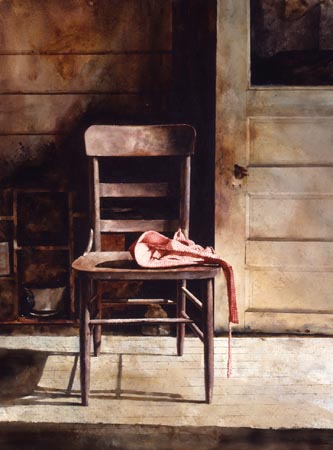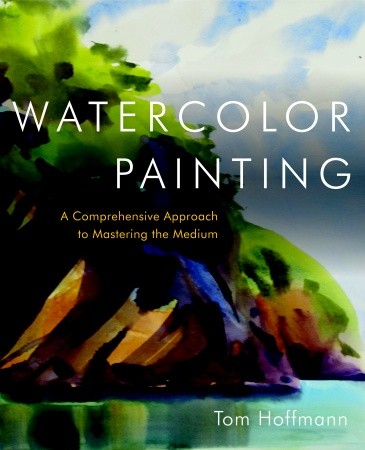If you can find the time, visit the Facebook page for the Hebron Saint Francis Senior Center located at 2915 Bohicket Road on John’s Island, a ways south of Charleston, SC. It’s an ordinary place, an old church in constant need of loving attention, graveyard over on one side, parking lot on the other. Was about twenty years ago when the watercolorist Mary Whyte wandered in, fresh from Ohio and Pennsylvania, not knowing a soul. Alfreda “recalled their first meeting…
The first time Miss Mary come to the center, we were there sewing and cooking, and in walk this white girl, kind of scraggly an’ all…. Here was this skinny, kind of pitiful white girl comin’ in, not known’ where she was goin’ or what she was looking for, and definitely in need of some love. So the first thing we do is give her a big plate of food. You know, to fatten her up a bit. God know, I’ve been trying to fatten her up for years, but it still not workin’….So I keep feedin’ her and loving’ her because it what she need. It what everybody need.”
Decades later, Mary writes, “This is my dear friend Alfreda in one of her spectacular hats.”

Mary Whyte is one of the finest watercolor artists in the world. I’m especially attached to her because she wrote the first book I ever read on the subject, “Watercolors for the Serious Beginner,” and I remember thinking, “how is it possible for an artist, this artist, my first teacher, to coax that kind of humanity from this set of paints?” It seemed impossible. Nearly fifteen years after I read that book, I remain in awe of the technique, but I’m past that. I’m in awe of the dignity, the humanity, the life that Mary Whyte captures time and again.
Whyte’s move to the low country of South Carolina has been beautifully documented. Her early visits to the Hebron Center resulted in more inspiration than most artists experience in a lifetime. She shifted from landscapes and everything else to portraiture, and that made all the difference. Once again borrowing from the archive of her website, here’s one the many paintings of local children—many related in some way to the Hebron ladies—with one of the signature quilts that appear so often, and so lovingly, in Whyte’s work. This one is called “Persimmon” (the one with Alfreda in the hat is called “Red”).
 One more before I fill-in some more details and tell you about the book. Whyte: “This is Georgeanna, whom I have painted for twenty years and is now almost ninety years old. She lives only a couple of miles from my house. The setting for this painting is her kitchen, where we often spend time visiting.” Two items of note. One, her magnificent handling of steam. Second, the sense of person and place, the warmth, the sense that this woman is someone close to the artist.
One more before I fill-in some more details and tell you about the book. Whyte: “This is Georgeanna, whom I have painted for twenty years and is now almost ninety years old. She lives only a couple of miles from my house. The setting for this painting is her kitchen, where we often spend time visiting.” Two items of note. One, her magnificent handling of steam. Second, the sense of person and place, the warmth, the sense that this woman is someone close to the artist.
 Artists grow. I suppose that’s the message that comes across most clearly in a new, altogether wonderful book entitled “More Than a Likeness: The Enduring Art of Mary White.” The book is large format, large enough so that the images are full of life, but smaller than they appear in person (darn! I just did some web research and found out that the Butler Art Museum in Youngstown, Ohio just closed a Whyte exhibit—and I will be there next weekend). I really want to see her work full-sized and in their glory: to see her work full-size [typically at least two feet on the smallest side] would be a thrill])
Artists grow. I suppose that’s the message that comes across most clearly in a new, altogether wonderful book entitled “More Than a Likeness: The Enduring Art of Mary White.” The book is large format, large enough so that the images are full of life, but smaller than they appear in person (darn! I just did some web research and found out that the Butler Art Museum in Youngstown, Ohio just closed a Whyte exhibit—and I will be there next weekend). I really want to see her work full-sized and in their glory: to see her work full-size [typically at least two feet on the smallest side] would be a thrill])
Anyway… as I said, artists grow, and it’s fascinating to watch Whyte evolve from her life around the Senior Center to a fuller sense of the Working South, the subject of a book that was featured on CBS Sunday Morning.
Want to see more? There’s a video for her book, Down Bohicket Road, too.
Over time, John’s Island has changed. Tourists become frequent visitors, buy vacation homes, and demand services. Farms become shopping centers. Teenagers, so innocent in her earlier work, deal with different kinds of issues. People get older, and live the way they live. To her great credit, Whyte doesn’t paint an idealized world. She paints what she sees, and tells the contemporary story. From that era, Absolution is one of the highlights. Whyte: “I am always interested in textures, so the idea of painting a model with long hair, a beard and tattoos appealed to me. “Absolution”, refers to our vulnerability as people, and to the seduction of drugs. The shaft of light represents God’s forgiveness, and is also orchestrated as a compositional device to lead the viewer’s eye up and through the painting.”


 Every once in a while, I’ll find an artist on the web whose work I truly admire. I recently stumbled upon a Texas watercolorist named Mark Stewart, and I thought you might enjoy seeing some of his work. Of course, there’s no reason why you should read any of what I have to say… just go directly to his
Every once in a while, I’ll find an artist on the web whose work I truly admire. I recently stumbled upon a Texas watercolorist named Mark Stewart, and I thought you might enjoy seeing some of his work. Of course, there’s no reason why you should read any of what I have to say… just go directly to his 









